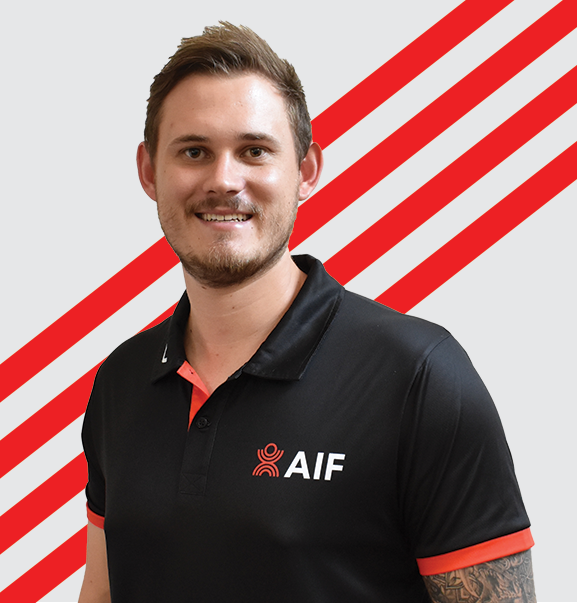The Fitness Zone

Important Aspects Of Strength & Conditioning Training To Achieve Client’s Fitness Goals
By: Brodie Hicks, QLD Australian Institute of Fitness Coach
The title of Strength and Conditioning is synonymous with thoughts of hard work leading to development, performance and results; and within what is a results-based industry the achievement of these can be the make or break for strength and conditioning coaches worldwide.
This constant pressure and insatiable appetite for performance has lead strength and conditioning coaches to conduct an ongoing quest for scientific-based technical knowledge such as periodisation, movement screening, energy system utilisation, strength and power training, nutrition, and much more. However, what if it wasn’t the programming, periodisation, or nutrition skills that were potentially limiting athletic performance? The article below will delve in to the hidden aspect of strength and conditioning, and how we as performance coaches may be failing our athletes without even knowing it.
The term “buy-in” is one that is thrown around quite often within sports
performance circles these days. The Cambridge Dictionary states that buy-in is “the fact of agreeing with and accepting something that someone suggests”. As such, buy-in within sporting circles may pertain to coaching staff and athletes accepting and believing in certain training styles, playing styles, testing, and much more.
Brett Bartholomew, discusses this concept within his book titled “Conscious Coaching”. Within this book Brett states that almost every day, strength and conditioning coaches will talk to their athletes about training, nutrition, recovery and performance, however these same people don’t always communicate in a manner that the athletes understand. A personal connection is therefore not made and buy-in may be lost. While these same coaches may see their athletes complete the training sessions discussed, these athletes may fail to meet the intensity required, instead simply going through the motions as the training is “required”. These same strength and conditioning coaches are then left wondering why their athletes aren’t seeing the results they should be. It is for this reason that Brett suggests that a training program is only as good as an athlete’s willingness to buy into it. The question must then be posed is: if buy-in is so important, then how do we build it?
A concept which is often forgotten when communicating with athletes is the
ability to build a personal connection. Strength and conditioning coaches often get lost in the information that they are delivering and forget that building a connection with the athlete is just as, potentially even more, important than the information itself. This connection can come from rapport building, humour, small talk, and inviting questions, however the key here is to be genuine.
Once a personal connection has been made, the athlete must be educated as to why what they are doing is important. Again, this information needs to be translated in a way that the athlete both understands and appreciates. Relate the training principles back to the athlete’s sport performance and ensure that the information itself is not provided as a bunch of confusing sport-science jargon.
Finally, a strength and conditioning coach must build trust between themselves and their athletes. Trust, combined with strong communication is a recipe for success. Trust can however only be built when the coach is willing to learn about thehistory of their athlete’s body and mind. This information will allow the coach to gage as to what makes their athletes tick, which when combined with the fundamental knowledge of sport science will allow for an evidence-based program that will resonate with the athlete.
Strength and conditioning is a profession that can often get lost in the technical aspects of athletic development. However, if we as strength and conditioning coaches neglect the mental side of sport performance, the potential of our athletes may largely be left untapped. The importance and ability to build buy-in cannot be understated within the world of strength and conditioning and the psychological constructs discussed above surrounding this notion must truly be understood by strength and conditioning coaches if peak athletic performance is sought to be achieved.
Read more articles
Disclaimer: Where Certificate III in Fitness, Cert III/Cert 3, or Fitness Coach is mentioned, it refers to SIS30321 Certificate III in Fitness. Where Certificate IV in Fitness, Cert IV/Cert 4, or Personal Trainer is mentioned, it refers to SIS40221 Certificate IV in Fitness. Where Master Trainer Program™ is mentioned, it refers to Fitness Essentials and SIS40221 Certificate IV in Fitness. Where Master Trainer Plus+ Program™ is mentioned, it refers to SIS30321 Certificate III in Fitness and SIS40221 Certificate IV in Fitness. Where Certificate IV in Massage or Cert IV/Cert 4 is mentioned, it refers to HLT42021 Certificate IV in Massage Therapy. Where Diploma of Remedial Massage is mentioned, it refers to HLT52021 Diploma of Remedial Massage.











